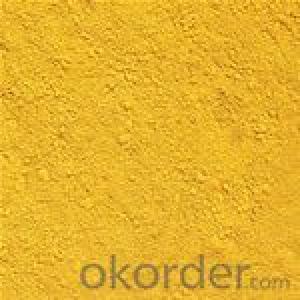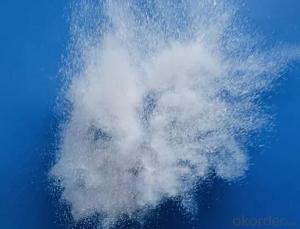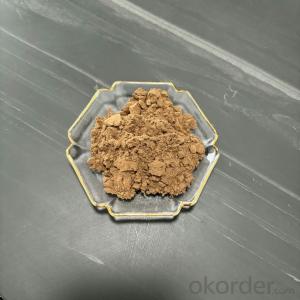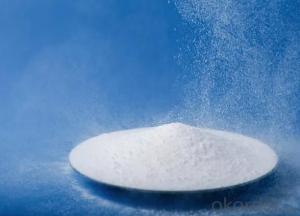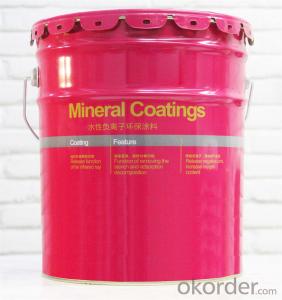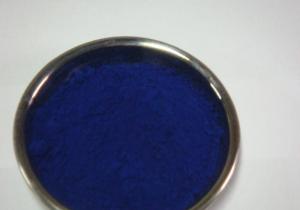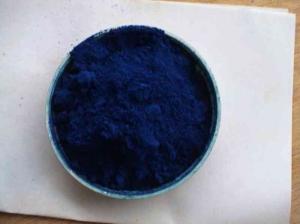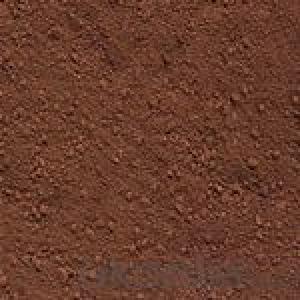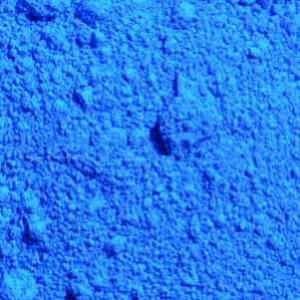iron oxide yellow pigment 313
- Loading Port:
- China Main Port
- Payment Terms:
- TT OR LC
- Min Order Qty:
- -
- Supply Capability:
- -
OKorder Service Pledge
OKorder Financial Service
You Might Also Like
Quick Details
· CAS No.: 51274-00-1
· Other Names: ferric oxide yellow
· MF: Fe2O3
· EINECS No.: 257-098-5
· Place of Origin: China (Mainland)
· Usage: Ceramic Pigments, Coating Pigment, Cosmetic Pigment, Ink Pigments, Plastic & Rubber Pigment, Leather Pigments, paint and coating
· Brand Name: Bright Sun
· Model Number: 313
· Type: Iron Oxide
· Style: Inorganic Pigment
· product: iron oxide yellow pigment 313
· type: iron oxide
· model: 313
· style: inorganic pigment
· color index: P.Y.42(77492)
· grade: industrial grade
· tinting strength: 95-105
· Process: wet method
· appearance: yellow powder
· Certificate: ISO9001
· Packaging & Delivery
Packaging Details: | 25kgs/bag(colored valve bag/craft paper compound bag/plastic woven bag lined with plastic film/); 500kg or 1000kg big bags; 12MT/20'FCL, on wooden pallet; iron oxide yellow pigment |
Delivery Detail: | Within 2weeks after receiving the deposit or L/C |
Specifications
1 iron oxide yellow powder
2 good covering ability and weather resistance
3 fine dispersion
4.20years factory
1. Properties:
Strong tingting strength, excellent coverage.
Good dispersion.
Good weatherability.
2. Specifications:
Item | Index |
Primary color |
|
Diluted color |
|
Iron content (Fe2O3) 105℃ drying%≥ | 86 |
Fineness (325 mesh wet sieve residue)%≤ | 0.3 |
Oil absorption, g/100g | 25-36 |
Moisture & 105℃ volatile% | 1.5 |
Water solubles% ≤ | 0.5 |
Water suspended matter PH value | 4-6 |
Relative tinting strength (compared with standard sample%) ≥ | 100± |
3. Application:
a. paint, coating, plastics, rubber, printing ink industries.
b. The construction materials: concrete, bricks, pavig-blocks, colorful tiles, ect.
4. Packing:
Net weight 25 kg in craft paper bag or knitting bag with plastic liner or as per clients' request. 13 MT/20'FCL
- Q:what is the function of pigment molecules in photosynthesis?
- They absorb light from the sun
- Q:What does the word pigment mean?
- meant to be a pig. :)
- Q:how are the pigments in clothes differ from plant pigments?
- Pigments are pigments. They are made of molecules that absorb some colors and reflect others from the visible spectrum of light, which gives everything color. Black pigments absorb everything and reflect nothing, so black is the absence of color and it is why dark clothing are warmer in winter. White pigments reflect everything and absorb nothing, so clothing that is white is cooler in summer. Most plants have more chlorophyll, a green pigment, in them than other pigments, so the plant is overwhelmingly reflecting green back to our eyes and absorbing the red and blue ends of the spectrum. In fall, when the chlorophyll breaks down, we can see the yellow, orange, and red pigments that are also in the leaf for a few weeks. In this way, all pigments are alike. However, perhaps what your teacher is looking for is that the green pigment chlorophyll in plants not only absorbs red and blue wavelengths of light, it also uses that energy to excite electrons from the molecules of chlorophyll and send them through an electron transport chain that enables light energy to be converted to chemical energy and store it in the C-H bonds of glucose, which is made during photosynthesis. Other pigments, whether they be in clothes or other objects such as cars or just about anything else do not do this. Only plant chlorophyll, or the green pigment in plants, converts light energy to chemical energy. That is the one huge difference. Otherwise, like all other pigments, chlorophyll absorbs some wavelengths of light and reflects others, in the case of chlorophyll, green wavelengths of light.
- Q:Is gel food coloring a pigment or a dye?
- Dyes contain pigments, my friend. What is a pigment? They are like little beads. Very very tiny beads of the same color. Then if you spread these out, they give the thing a color. For example, the little green beads in leaves give it a green color. Pigment in our hair gives it a blonde/auburn/brown/black color. What is a dye? A dye is a liquid made up of water and pigments. The pigments are dissolved in water (well not really dissolve just that you cant see the beads) so that it's easier for us to use it. Everything that has a color is made up of pigments. So, gel food coloring is a thicker version of a dye that contains pigments.
- Q:I have dyed my hair dark brown for months now it keeps fading because i've had bleach on before hand, so I need some advice on buying decent hair dyes for pre-pigmenting it so my hair dye stops fading out into a horrible gingery brown!
- once you coloration your hair from blonde back to brown, you will possibly be able to desire to place the 'coloration' back into the hair as while that's bleached, that's stripped of coloration. hence you will possibly be able to desire to place the purple back into your hair. attempt making use of a mahogony coloration which has purple in it. this might forestall that green hue interior the hair. keep in mind, purple fades quicker than the different coloration so as quickly as the purple interior the colour starts to vanish seem boring, you are able to then use a typical brown in case you desire, or shop fresh while needed with the purple/brown. desire this enables.
- Q:I got this question from my A2 Biology but I can't find the answer. Does anybody know?
- Color. Chlorophyll a is light green. The accessory pigments, chlorophyll b is olive green, the xanthophylls are yellow/brown, and the carotenes are red.
- Q:Compare and contrast pigment color with the color seen from a light. What is the difference between mixing pigment colors and mixing light colors?
- Pigments are chemicals that selectively absorb and reflect different spectra of light. When a surface is painted with a pigment, light hitting the surface is reflected, minus some wavelengths. This subtraction of wavelengths produces the appearance of different colors. Most paints are a blend of several chemical pigments, intended to produce a reflection of a given color. Mixing pigments is subtractive. Mixing light is additive. Let's take the primary pigments, red, blue and yellow. Red pigment is red because the chemical it is made of absorbs (subtracts) blue and yellow light that falls on it and reflects only red light to your eye. Similarly, blue pigment is blue because it absorbs red and yellow light and reflects only blue. So when you mix the three primary pigments together, you produce something that absorbs all of the light falling on it in equal amounts and reflects nothing to your eye. Thus, it appears black. In contrast, when you mix only red and blue light, there isn't any yellow in it, so the resulting light appears purple (the complement of yellow). Likewise, if you mix red and yellow light it appears orange (the complement of blue). If you mix all three colors of light together (in equal amounts), the resulting light appears white because it contains all of the colors of the spectrum. This explanation is sound, although greatly simplified. The two summaries above are not my own, nor do I claim them as mine.
- Q:Know this ounds kinda obvious but just wanted to confirm, is there more pigment in the middle of the beetroot than on the edges?
- I've known it to be in the skin and thats from a cooking point of view.
- Q:How can you extract pure pigments from a sample of leaves in a form that you could test the absorbency of the various pigments??I don't know how to extract enough pigment in order to fill a cuvette and measure the absorbance, please help!! :D
- Separation of plant pigments using chromatography. Paper chromatography is a useful technique in the separation and identification of different plant pigments. In this technique, the mixture containing the pigments to be separated is first applied as a spot or a line to the paper about 1.5 cm from the bottom edge of the paper. The paper is then placed in a container with the tip of the paper touching the solvent. Solvent is absorbed by the chromatographic paper and moved up the paper by capillary action. As the solvent crosses the area containing plant pigment extract, the pigments dissolve in and move with the solvent. The solvent carries the dissolved pigments as it moves up the paper. The pigments are carried along at different rates because they are not equally soluble. Therefore, the less soluble pigments will move slower up the paper than the more soluble pigments. This is known as developing a chromatogram.
- Q:If you could explain it to me I would be very happy!
- Accessory pigments are light-absorbing compounds, found in photosynthetic organisms, that work in conjuction with chlorophyll a. They include other forms of this pigment, such as chlorophyll b in green algal and higher plant antennae, while other algae may contain chlorophyll c or d. In addition, there are many non-chlorophyll accessory pigments, such as carotenoids or phycobiliproteins which also absorb light and transfer that light energy to photosystem chlorophylls. Some of these accessory pigments, particularly the carotenoids, also serve to absorb and dissipate excess light energy, or work as antioxidants.
1. Manufacturer Overview |
|
|---|---|
| Location | |
| Year Established | |
| Annual Output Value | |
| Main Markets | |
| Company Certifications | |
2. Manufacturer Certificates |
|
|---|---|
| a) Certification Name | |
| Range | |
| Reference | |
| Validity Period | |
3. Manufacturer Capability |
|
|---|---|
| a)Trade Capacity | |
| Nearest Port | |
| Export Percentage | |
| No.of Employees in Trade Department | |
| Language Spoken: | |
| b)Factory Information | |
| Factory Size: | |
| No. of Production Lines | |
| Contract Manufacturing | |
| Product Price Range | |
Send your message to us
iron oxide yellow pigment 313
- Loading Port:
- China Main Port
- Payment Terms:
- TT OR LC
- Min Order Qty:
- -
- Supply Capability:
- -
OKorder Service Pledge
OKorder Financial Service
Similar products
New products
Hot products
Related keywords
